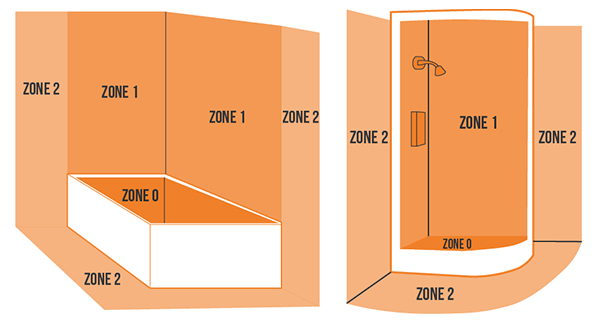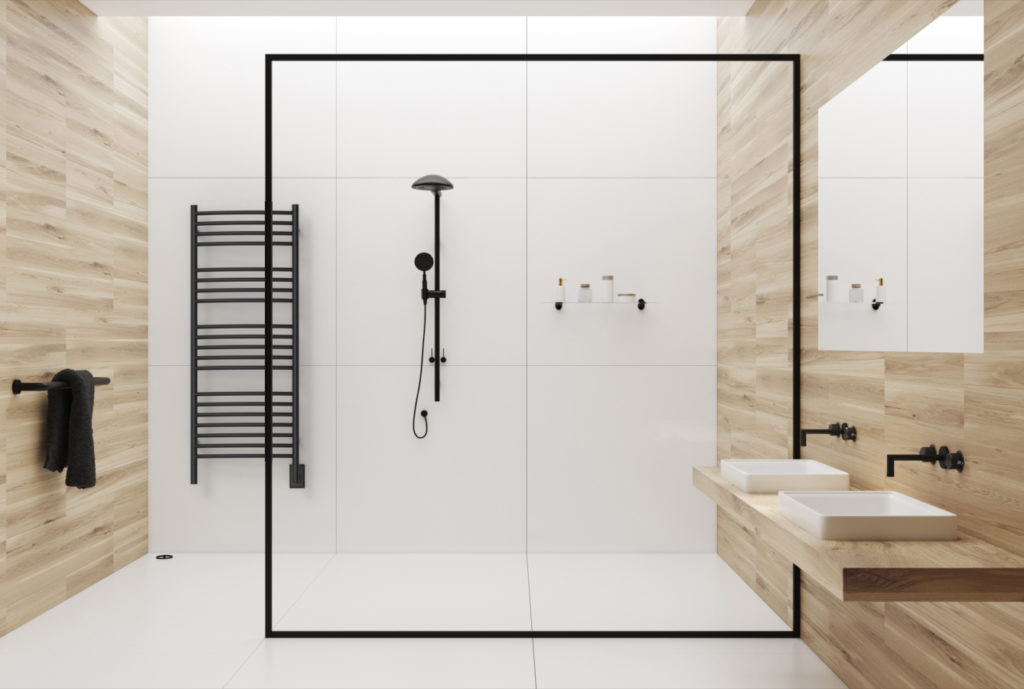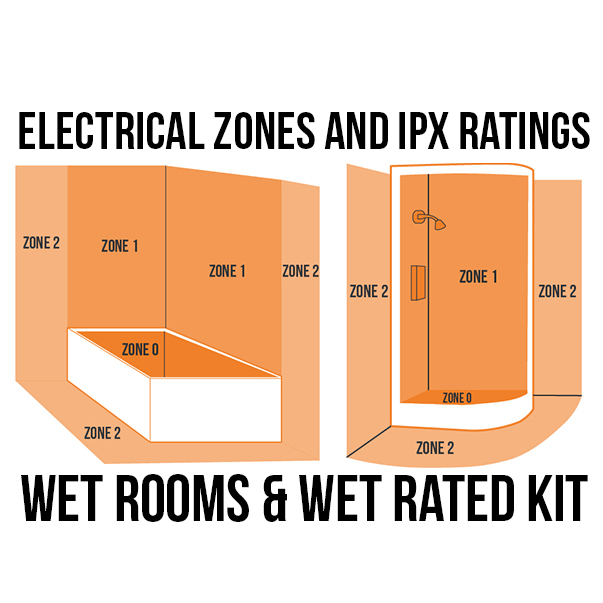In bathroom electrical installations, it's crucial to understand the safety zones designated by electrical codes or standards. In the United States, these guidelines are primarily governed by the NEC (National Electrical Code). While the NEC does not recognize IP or IPX ratings for installation and certification, these ratings are often used internationally to describe an appliance's or device's water resistance capabilities. Below, we explain the IPX rating system before delving into the specifics of each safety zone.
The IPX Rating System Explained
The IPX rating is a component of the Ingress Protection (IP) rating system, an international standard (IEC 60529) that defines the level of sealing effectiveness of electrical enclosures against foreign bodies (like dust and tools) and moisture. An IP rating usually comprises two digits: the first indicates protection against solid particles, and the second (represented by ‘X’ in IPX) denotes protection against water ingress.

For instance, an IPX4 rating suggests that the device is protected against water splashes from any direction. The full IP rating, such as IP44, means the device is protected against solid objects larger than 1mm (first digit - 4) and water splashes from any direction (second digit - 4). While informative, it’s important to understand that in the U.S., compliance with NEC standards, focusing on GFCI protection and safe installation practices, is paramount over IPX ratings.

ZONE 0:
This is the area inside the bathtub or shower basin, where direct water contact is a constant. Consequently, electrical installations are not permitted in Zone 0 under NEC guidelines.
ZONE 1:
Zone 1 extends vertically from the top of the bathtub or shower basin to 7.4 feet (approximately 2.25 meters) or to the height of the showerhead, whichever is higher. In this zone, electrical installations must prioritize safety and water resistance. An IPX4 rating or higher is a useful reference for understanding the necessary water resistance in this zone, though NEC compliance is key.
ZONE 2:
Extending 2 feet (approximately 0.6 meters) horizontally from the outer edge of Zone 1, Zone 2 also emphasizes electrical safety and water resistance. An equivalent IPX rating for general understanding might be IPX4 or higher.
Outside Zones (Zone 3 and beyond):
In these areas, the likelihood of direct water contact significantly diminishes. Standard electrical installations are typically suitable, with GFCI protection still recommended for enhanced safety.
Consulting Local Codes and Licensed Electricians:
Remember, electrical codes and regulations can vary. Always consult a licensed electrician and adhere to your local authority's guidelines. This overview provides a general understanding, but actual installations must comply with local standards, primarily NEC guidelines in the U.S.
JEEVES WET RATED KIT:
In wet areas like bathrooms, it's crucial to use specialized electrical equipment that is designed to withstand water exposure without compromising safety. One excellent solution for enhancing comfort and luxury in your bathroom is the Jeeves Wet-rated Kit for our Jeeves Collection heated towel racks.

The Jeeves Wet-rated Kit is a UL certified upgrade kit that allows for the installation of any Jeeves heated towel rack in a ‘wet area.’ These include but are not limited to above a bathtub, in a shower alcove or walk-in shower stall, or in a wet room. Following proper installation, the wet-rated kit ensures any Jeeves heated towel rack is safe to use in these areas.

By investing in the Jeeves Wet-rated Kit, you can enjoy the unparalleled experience of stepping out of the shower or bath and wrapping yourself in a warm, cozy towel, even in areas with water exposure. The kit is designed to meet safety standards and provide peace of mind, so you can relax and enjoy the benefits of your heated towel rack without any concerns.
Make sure your heated towel rack installation complies with electrical safety guidelines and indulge in the ultimate comfort and luxury that a properly installed heated towel rack can provide.
Remember, when installing electrical equipment in wet areas like bathrooms, always consult a licensed electrician and follow the guidelines outlined by your local authority. By adhering to safety regulations and using the Jeeves Wet-rated Kit, you can ensure a secure and enjoyable experience with your heated towel rack.

